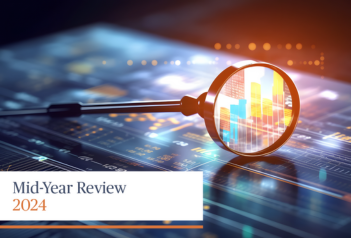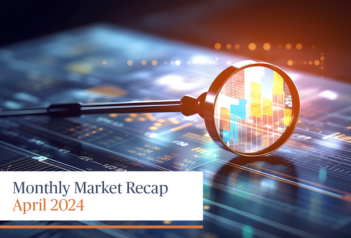My career began on a trading desk, but the tools I use to read the market came from an unlikely place. I reflect as San Antonio witnessed flyovers from the Thunderbirds and the Lewis Air Legends as part of a weeklong salute to the first responder Americans during this pandemic.
I was eighteen when I enrolled in flight school, the realization of a childhood dream to be a pilot. For the next two years, I flew more than 300 hours in several aircrafts, including twin-engine and aerobatic planes, and learned skills I would carry with me for decades.
Flight instruments give the pilot crucial information, like altitude and airspeed. Since 1953, most aircrafts place four of the primary flight instruments in a standard “T” pattern: altitude in the top center, airspeed to the left, altimeter to the right and the heading indicator in the middle spot beneath them. I trained my eyes to scan this panel in the same disciplined manner each time. I started with the altitude in the center, checking each point and then coming back to the top of the “T.” I learned this “T scan” as part of my training as a student pilot, in order to fly more complex airplanes, but the “T scan” approach continued to serve me.
When I became a trader, I applied that focus to the four screens on my desk. I organized the screens by primary quotes, by stocks we were trading that day, and by secondary indicators such as the price of gold and other commodities. I trained my eyes to keep the most relevant information in the center while adding to the right and left screens correlative statistics and price data such as the Dollar Index and lease rates.
By training my brain for repetition and recognition, I was constantly looking for a catalyst, a new trend, or signs of a price reversal to trade faster and better than my competitors.
My trading desk days are behind me, but in my work at Sendero, I still use the same techniques to start my day looking at my Bloomberg screens. My internal checklist helps filter through the noise and extract relevant data or trends and helps me make clearer decisions.
As you start your day, what is the first thing you look at? S&P 500 futures or a basket of stocks? Bond yields? Commodity prices? Do you focus on the macro or the micro?
Developing a checklist can make you a better investor and bring discipline to the trading day. The market can be a rocky ride, as we all know, but creating your own “T scan” makes the flight a little bit smoother.
If you have any questions or want to have a conversation about the market or your portfolio, please contact Liz, Ed, Fred, Scott, Tyler, or myself. Your Sendero team is ready to help.
Best Regards,

Amaury de Barros Conti
210-930-9409
aconti@sendero.com


